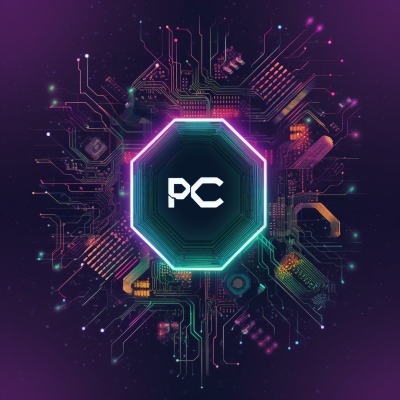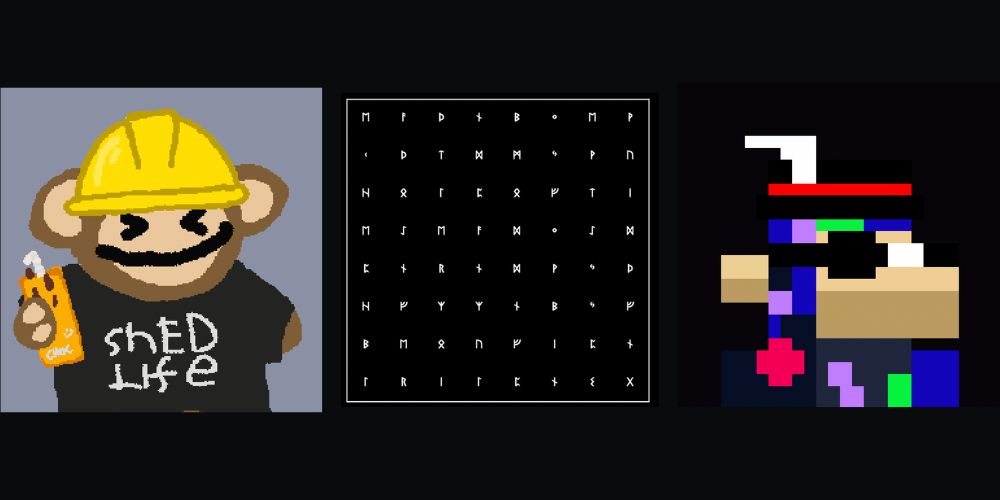Bitcoin Ordinals, digital artifacts inscribed onto individual satoshis on the Bitcoin blockchain, have been stirring excitement and controversy in the cryptocurrency world. This phenomenon has led to a resurgence of interest in Bitcoin development, with a notable focus on novel collections and protocols. Three prominent examples are NodeMonkes, Bitcoin Puppets, and the RSIC Metaprotocol.
You can buy Bitcoin BTC on top exchanges like MEXC, Gate.io and KuCoin using our VIP referral links with additional bonuses.
NodeMonkes
NodeMonkes is a collection of 10,000 pixelated inscriptions on Bitcoin, prized for their early creation date in February 2023. This collection, with inscriptions in the 80-110k range, has captured the attention of collectors and influencers alike. The launch was marked by an auction that concluded with 8,000 valid bids, finalizing at 0.03 BTC each. Despite initial uncertainties, NodeMonkes emerged as a success, becoming a top traded collection on MEonBTC and flipping another popular collection, Bitcoin Frogs, in floor price. The collection has even drawn admiration from influential figures like Yuga founder Gordon Goner and inspired renowned NFT artist Beeple.
Bitcoin Puppets
Bitcoin Puppets, another leading collection, faced a tumultuous launch. The minting process was marred by website crashes and bot interference, leading to last-minute changes and a reduced maximum mint number. Despite these challenges, the collection’s chaotic start eventually endeared it to its fan base. Post-launch, Bitcoin Puppets experienced significant trading volumes, quickly becoming a favorite among collectors. Its accessible price point, in contrast to the more expensive NodeMonkes, has made it an attractive option for many in the community.
RSIC Metaprotocol (Airdrop)
The RSIC Metaprotocol recently gained attention through an airdrop of 21,000 digital inscriptions, known as RSICs, to the Bitcoin Ordinals community. This event was part of a promotional game, with a backstory involving a “mysterious explosion” at manufacturing facilities, adding to the intrigue. The RSIC holders were given options to mine runes, sell RSICs, or let them fade. This airdrop has been both applauded for its innovation and criticized for potentially misleading marketing claims, especially regarding its status as the “first-ever rune on bitcoin.” This controversy highlights the importance of research and transparency in the rapidly evolving world of Bitcoin NFTs.
Technical and Market Considerations
Bitcoin Ordinals represent a significant shift in the Bitcoin ecosystem. Unlike other blockchains like Ethereum, Bitcoin lacks smart contract functionality, making trading Ordinals more challenging. They’re traded mostly over-the-counter (OTC) through dedicated Discord servers. The Bitcoin blockchain’s 4MB block size limit and the hard cap of 21 million coins theoretically limit the number of possible Ordinals. However, this constraint has not yet hindered the enthusiasm for these digital artifacts.
Bitcoin Runes
In October 2023, the Bitcoin ecosystem witnessed the introduction of Runes, a new fungible token protocol designed as a simpler and more efficient alternative to the BRC-20 standard. Developed by Ordinals creator Casey Rodarmor, Runes offers a UTXO-based protocol that addresses the shortcomings of the BRC-20 standard, notably the production of excessive “junk” UTXOs that clog the network.
Key Features of Bitcoin Runes
- Fungibility: Runes are fungible tokens issued directly on the Bitcoin blockchain.
- UTXO-based Protocol: Utilizes Bitcoin’s Unspent Transaction Output (UTXO) model for transactions, avoiding the creation of junk UTXOs.
- Simplicity: Unlike other protocols, Runes doesn’t require off-chain data or a native token, making it simpler to use.
BRC-20 Tokens
BRC-20 tokens were launched in March 2023 by developer Domo, BRC-20 tokens enabled the creation of Bitcoin-native fungible tokens.However, BRC-20 suffered from inefficiencies, such as excessive junk UTXO production.
Standard Mechanics
- Token Issuance and Transfer: Tokens are created through an issuance transaction, assigning token supply to a UTXO. This allows tracking of Rune token balances.
- Data Storage: Unlike Ordinals, which use the witness section of a Bitcoin transaction, Runes store data in OP_RETURN, a function for storing data on the blockchain.
Runes vs. BRC-20
Runes are seen as a more streamlined and efficient solution compared to the BRC-20 standard. We are still waiting for the final version of the Rune protocol.
Market Response
The introduction of Runes was met with enthusiasm in the Bitcoin community. The first Rune token, $RUNE, was issued immediately following the announcement. BTC Frontier Fund offered a $100,000 grant for developing a working Runes indexer, issuance, or transfer application. Luminex subsequently introduced a Runes issuance tool.
The rise of fungible tokens on Bitcoin, particularly with the Runes protocol, marks a significant development in the ecosystem. It reflects the ongoing efforts to enhance the issuance of fungible tokens on the Bitcoin base layer with minimal adverse effects. The Runes protocol, with its simplicity and efficiency, is poised to play a pivotal role in this evolution.
Conclusion
The emergence of Bitcoin Ordinals, particularly collections like NodeMonkes and Bitcoin Puppets, and events like the RSIC Metaprotocol airdrop, signify an exciting era for Bitcoin. They have not only introduced a new form of digital collectible but also revitalized interest in Bitcoin’s capabilities beyond its traditional role as a digital currency. As the landscape continues to evolve, it’s clear that the intersection of art, technology, and finance on the Bitcoin blockchain will remain a hotbed of innovation and debate.


Leave a Reply